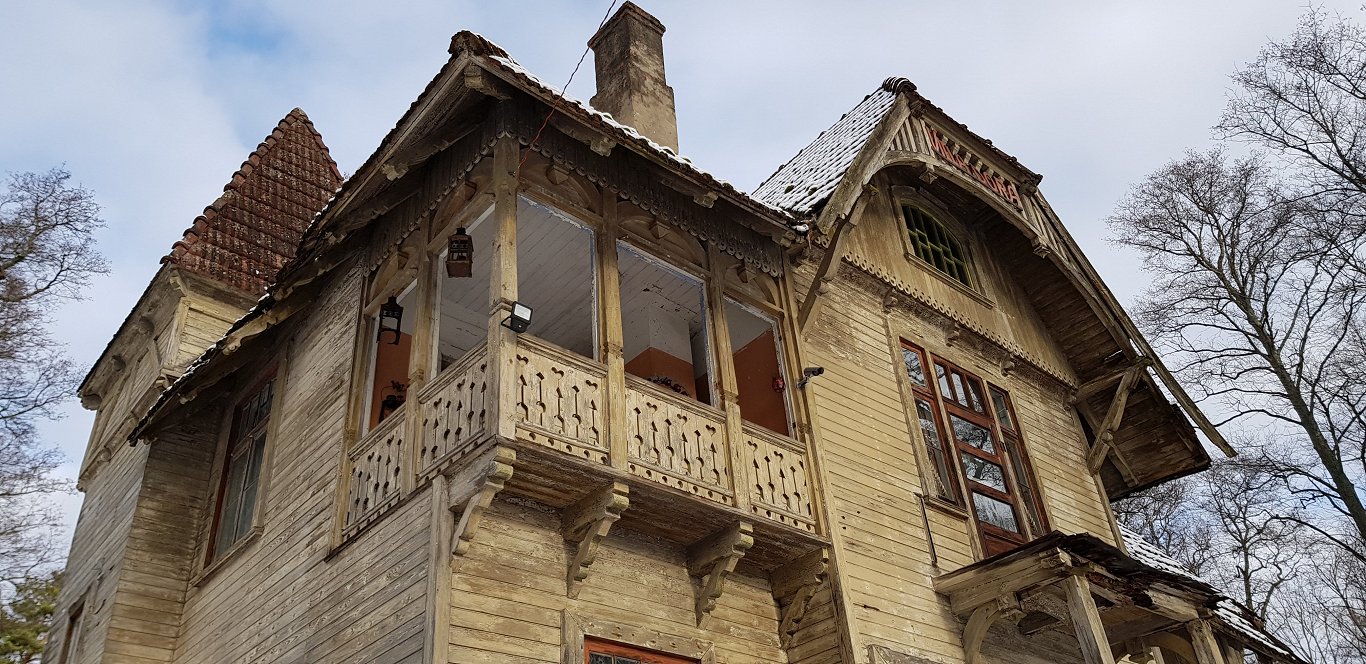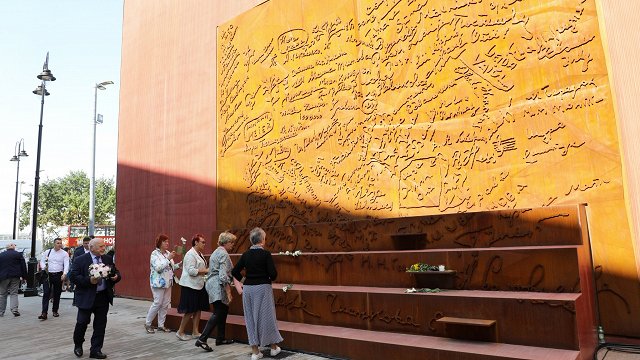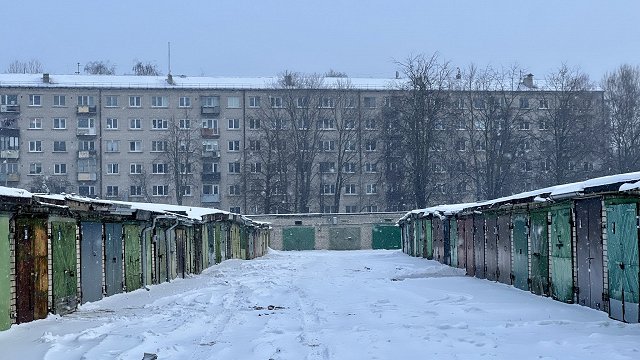People have been building with wood in Latvia for a long time. Large forests and easy access to timber made wood a common building material in Riga that was still used in the late 19th and early 20th century. Despite the destruction brought by two world wars and decades of neglect during the Soviet era, Latvia’s capital still is home to a large number of wooden houses. About 4,000 of them are standing in different parts of the Baltic metropolis – more than in any other European city.
But also in other areas and towns throughout Latvia have remained some fine examples of wooden architectural heritage. Scattered throughout Riga, the wooden houses are an essential feature of the cityscape. Around 500 alone are located in the historic centre, with the largest number of them dating back to the 19th century. Most of the other original wooden buildings were burned in the fire of 1812 – in a tragic episode in the history of the city. To thwart an attack by the troops of Napoleon that at the end did not happen, the wooden suburbs around the fortified medieval old town were burned down – only a handful of buildings survived the flames. A wooden city was rebuilt on the ruins.
Many years of history and a variety of different styles from baroque over classicism and historicism to even art nouveau are visible in the wooden architecture of Riga. A stroll through the city is a rewarding one for discovering
the most beautiful buildings in residential areas such as Ķīpsala, Āgenskalns, Grīziņkalns and Maskavas Forštate.
While some houses are still standing empty and sadly neglected in disrepair, many other have been restored to their original beauty or are under reconstruction. Renovations nowadays are often carried out lavishly with care and precision according to the original plans – to make sure that the building fits into its surrounding context and environment.
Wooden suburbia
The most-often mentioned showcase project is the so-called Kalnciema Quarter, an ensemble of renovated wooden houses along the main traffic road that acts as gateway between the Riga International Airport with the historic centre of the capital.
Restored and brought back into life around 15 years ago ahead of the NATO summit in Riga, the neighbourhood has become a hotspots of culture and entertainment – with a very popular organic food and crafts market, festivals and other outdoor events such as concerts and film nights in a courtyard around a historic set of wood houses. The suburban cultural space managed to attract like-minded people that developed, renovated and popularized the area further - it now has become a symbol of the renewal of wooden architecture in Riga.
The Kalnciema Quarter is a part of a larger historical area - the village of Āgenskalns that was founded in the 17th century on the left bank of the Daugava River. This part of Riga – known as Pārdaugava in Latvian, which literally
translated means ‘Over the Daugava’ – has retained a unique atmosphere created by the charming architecture of the wooden residences on site.
Other examples of this unique heritage that has recognized by UNESCO can be explored on Ķīpsala, a former fishing village and now the central island on the Daugava. In these two parts of the city – historically known in German as Kiepenholm and Hagensberg – many carpenters and woodworkers have expressed their art in the buildings. Their splendour is particularly visible in their original features and intricate details such as doors, window frames or fine carvings.
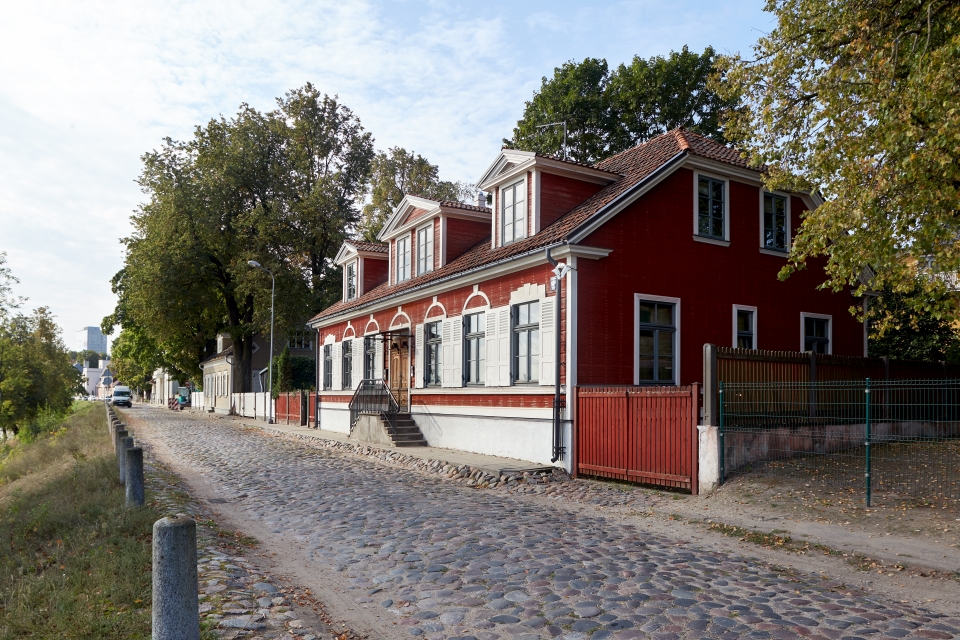
Especially Ķīpsala has developed into an exclusive residential district and desirable place to live in. The waterfront side with a breath-taking view of Old Riga was given a new lease of life by architect Zaiga Gaile and her husband, the businessman and former Latvian Prime Minister Māris Gailis. In 1997, the couple built a house for themselves and subsequently took care of the surrounding wooden buildings. "We started with five houses and over the years have renovated 18 houses", Gaile explains proudly. Some of them have been restored to their original appearance, others are complemented by modern additions and a few even have been moved there from the centre of Riga to save them from destruction.
However, the wave of renovations has not yet reached all the buildings in Pārdaugava. Still in need of renovation are in particular many wooden manor houses - suburban residences of wealthy Rigans that served as summerhouses and domiciles for social events. The wooden estates had their heyday between the second half of the 18th century and the middle of the 19th century. Riga at the time was a “wooden metropolis with a stone heart – the old town”, as the architect and historian Pēteris Blūms once praised the city. Back then, there were around 12,000 wooden buildings in the suburbs of Riga.
Wooden workers' buildings and post-card settings
Back on the other side of the Daugava, the former working-class neighbourhood of Grīziņkalns also features many predominantly two-storey wooden buildings – both renovated ones as well as buildings in dire need of repair. Amid the narrow cobblestones of the once proletarian area, from where many of the revolts during 1905 started and spread all around the city, two restored houses make up the Wooden Riga restoration centre “Koka Riga“.
Dedicated to the renovation of wooden buildings, it provides advice on renovating and maintaining wooden buildings, and regularly hosts exhibitions, workshops and seminars. Similar practical insight and information about how wooden house can be restored can also be gained at the Wooden Architecture Centre in the Kalnciems Quarter. It offer also guided tours of the wooden architecture in Pārdaugava.
The emotional and aesthetic value of wooden architecture can be experienced also outside Riga. Visitors to Jūrmala will not only be impressed by the region's long, white, sandy beaches and pine forest of the so-called Baltic Riviera but also the hundreds of elaborately decorated old wooden houses nestled between the trees. Many of them have carved facades with decorated gables and verandas with stained-glass windows.
Worth a trip is also a visit to western Latvia to the scenic town of Kuldīga. Historically known as Goldingen, the atmospheric old town of the post-card city on the Venta river is an architectural gem with many restored wooden and timber houses.
Having also stood the test of time is Ungurmuiža Manor near the town of Cēsis – an unique ensemble of wooden architecture from the 18th century around the only Baroque-era wooden manor house still standing in
Latvia. Enjoy wooden architecture at its best!
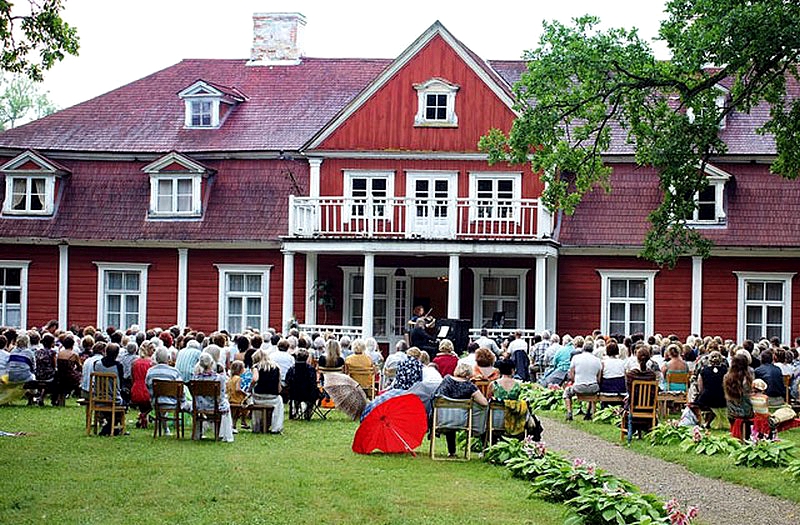
You can read more about the German-Baltic Chamber of Commerce in Estonia, Latvia and Lithuania at the official website and find out more about the Baltic Business Quarterly magazine here: https://www.ahk-balt.org/lv/publikacijas/zurnals.
